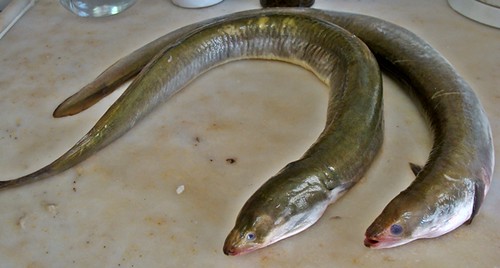
1. Chesapeake Bay: Vast Estuary, Important Source
Chesapeake Bay is home to the largest estuary in America, stretching an impressive 200 miles from the Susquehanna River to the Atlantic Ocean. This vast body of water is a vital part of the region's ecology, providing a habitat for a variety of fish, birds, and other wildlife. It also serves as an important source of food and recreation for the people of the Chesapeake region, with fishing, boating, and other activities enjoyed by locals and visitors alike.
Also → The Chesapeake Bay Bridge-Tunnel
Advertisement2. The Chesapeake Bay Bridge: A Stunning Engineering Achievement
The Chesapeake Bay Bridge is an impressive feat of engineering, stretching 4.3 miles from Sandy Point to Kent Island in Maryland. It is capable of carrying an impressive 1,500 vehicles per hour in each lane, making it a vital part of the transportation infrastructure in the area. The bridge is a popular tourist attraction, offering stunning views of the bay and the surrounding area.
Also → The Indian River Lagoon: A Natural Wonder
3. The Chesapeake Watershed: A Vast Network of Rivers and Wildlife
The Chesapeake watershed is home to an astonishing 100,000 creeks, streams, and rivers, with 150 of them being major rivers. This vast network of waterways is a major part of the Chesapeake's unique ecosystem, providing a home for a variety of wildlife and a source of recreation for people. The Chesapeake watershed is a vital part of the region's history and culture, and its importance to the local environment cannot be overstated.
Also → 8,350 Rivers: Azerbaijan's Vital Water Source
4. The Last Skipjacks: A reminder of the Bay's maritime heritage
The Chesapeake Bay is home to the last remaining fleet of Skipjacks, the last commercially run fishing fleet in North America to use sail power. These traditional boats, which have been used in the Bay for over a century, are a reminder of the region's maritime heritage and a testament to the hard work of the local fishermen who rely on them to make a living.
Also → The Amazon River is the largest river in South America
Advertisement5. The Shallow Depth of the Chesapeake Bay
The Chesapeake Bay is surprisingly shallow, with an average depth of only 21 feet across its entire expanse, including all its tidal tributaries. This shallow depth makes the bay a unique and interesting body of water, as it is the largest estuary in the United States and the second largest in the world. The shallow depth also makes it a great spot for recreational activities such as fishing, boating, and swimming.
Also → The Mangrove Forest of Bangladesh: A Natural Heritage Worth Protecting
6. The Chesapeake Bay: A Habitat and Ecosystem of Vital Importance
The Chesapeake Bay is a haven for aquatic life, boasting over 350 species of fish, including the American eel and Atlantic Menhaden. These two species are particularly important to the bay's ecosystem, as the American eel is a keystone species, while the Atlantic Menhaden is a primary food source for many of the bay's predators. The Chesapeake Bay is a vital habitat for these species, and its health is essential for the continued survival of the fish that call it home.
Also → The Stunning Lake of Chad: A Natural Wonder of the World
7. The Importance of the Chesapeake Bay to Migratory Birds
Every year, the Chesapeake Bay region is a winter haven for over one million waterfowl. Ducks, geese, swans, and other migratory birds flock to the area to take advantage of its abundant food sources and sheltered waters. The Chesapeake Bay is a vital stopover for these birds, providing them with a safe place to rest and refuel before continuing their journey south. The Bay's wetlands, marshes, and estuaries are also important habitats for these birds, providing them with a place to feed, breed, and nest. The Chesapeake Bay is a vital part of the migratory bird's journey, and its importance to the health of these species cannot be overstated.
Also → Paraguay's Pantanal is the largest freshwater wetland in the world
Advertisement8. The Chesapeake Bay: A Unique Habitat for Fish and Wildlife
The Chesapeake Bay is a remarkable body of water, with deep troughs running along a large section of its length. These troughs are believed to be the remnants of the ancient Susquehanna River, and can reach depths of up to 174 feet. This is a testament to the bay's long and varied history, and provides a unique habitat for the many species of fish and wildlife that call the Chesapeake home.
Also → Senegal's Rivers Provide Necessary Water for Life
9. The Chesapeake Bay: A Major Shoreline in the Eastern United States
The Chesapeake Bay is an impressive body of water, boasting an impressive 11,684 miles of shoreline - more than the entire U.S. West Coast! This shoreline includes the tidal tributaries that feed into the Bay, making it a vital part of the local ecosystem and a popular destination for recreational activities such as fishing, boating, and swimming.
Also → Nigeria: Home to Two of the World's Largest Rivers
10. The Chesapeake Bay: A Natural and Cultural History
The Chesapeake Bay, known to the Native Americans as "Tschiswapeki" or "great shellfish bay", is a large estuary in the Mid-Atlantic region of the United States. Spanning over 200 miles, it is the largest estuary in the United States and is home to a variety of wildlife, including over 350 species of fish, more than 2,700 species of plants, and over 350 species of birds. It is also a major source of seafood, with oysters, crabs, and clams being the most popular. The Chesapeake Bay is an important part of the culture and history of the region, and its name is derived from the Algonquian Indian word meaning "great shellfish bay".
Also → Water Rats: A Species Important to Ecosystem
Advertisement








